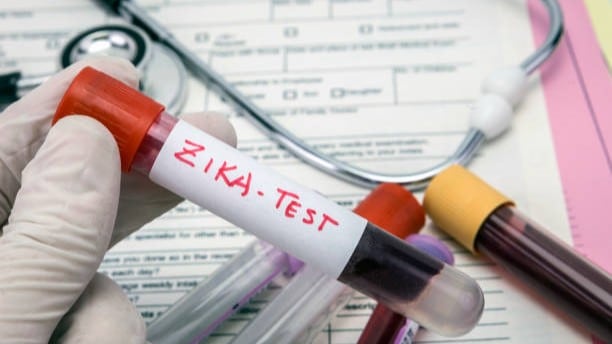At a glance
The following information is for healthcare providers and health departments collecting and shipping body fluid specimens for Zika virus testing.

Preparing to collect body fluid specimen
- Obtain appropriate patient consent to collect and test specimens for Zika virus before specimens are collected.
- All submissions should go through your state or local health department. Specimens should not be submitted directly to CDC without guidance from your state or local health department.
- Review CDC Form 50.34. This form must be prepared electronically and submitted with all specimens.
Serum or cerebrospinal fluid (CSF)
- RNA NAAT (nucleic acid testing) and antibody testing can be performed on serum and CSF.
- At least 1.0 mLA of serum or CSF is required for testing.
- Transfer serum or CSF to a plastic tube measuring approximately 50 mm tall and 15 mm in diameter (e.g., 1.8 mL cryotube or 2.0 mL microtube) with screw cap and secure with a small piece of thermoplastic, self-sealing lab film.
- For virus isolation testing, specimens should be frozen as soon as possible (≤ -20°C).
- For antibody and RNA NAAT testing, specimens should be kept cold (2–8°C) or frozen (≤ -20°C).
- Store remainder of sample at ≤ -70°C for long term storage.
Body fluids other than serum or CSF (e.g., urine, amniotic fluid)
- RNA NAAT and virus isolation can be performed on other body fluids for diagnostic testing (e.g., urine and amniotic fluidB), or for research purposes (e.g., semen).
- Provide 0.5–1.0 mL of the specimen in a sterile screw capped vial secured with a small piece of thermoplastic, self-sealing lab film. Please ensure a tight seal as leaking specimens cannot be accepted.
- If collecting both urine and semen, obtain the urine specimen first.
- For RNA NAAT testing, specimens should be kept cold (2–8°C) or frozen (≤ -20°C) for storage and shipping.
- For virus isolation testing, specimens should be frozen as soon as possible (≤ -20°C).
- Store remainder of sample at ≤ -70°C for long term storage.
Completing the CDC Submission Form
Please read the following instructions for sending diagnostic specimens to CDC. Electronically complete a CDC Specimen Submission Form 50.34. Handwritten forms cannot be accepted.
NOTE: Testing will not be initiated without the inclusion of:
- Date of onset of symptoms
- Date of specimen collection
- Any pertinent travel history (travel in the past 12 weeks)
- The patient's name (required for submitting specimens)
To enable printing of CDC submission form 50.34, each of the following fields must be completed, as directed:
- Specimen Origin field (located on page 1, top left corner), select "HUMAN" from the drop-down menu.
- Test Order Name field (located on page 1, top left), select "ARBOVIRUS MOLECULAR DETECTION" or "ARBOVIRUS SEROLOGY" from the drop-down menu as applicable for RT-PCR or IgM serologic testing, respectively.
- Original Submitter e-mail field (located on page 1, middle right box), type your e-mail address.
- Brief Clinical Summary field (located on page 2, top of page), include:
- The name(s) of the arbovirus(es) for which you are requesting testing, if known. For example, type "Zika testing" or "dengue and Zika testing".
- The name(s) of the arbovirus(es) for which you are requesting testing, if known. For example, type "Zika testing" or "dengue and Zika testing".
Shipping serum, CSF, and other body fluids
- All specimens should be stored and shipped cold or frozen depending on the test needs described above. For cold specimens, the sample should be placed in an insulated container with adequate ice packs to ensure specimen ("cold chain") integrity. For frozen specimens, ship the sample on enough dry ice to ensure specimens remain frozen until received.
- For testing at CDC Fort Collins, CO, ship specimens to: Arboviral Diseases Branch Diagnostic Laboratory, Centers for Disease Control and Prevention, 3156 Rampart Road, Fort Collins, Colorado 80521
- If you have additional questions for the Arboviral Diseases Branch, call 970-221-6400.
Reporting test results
- Test results for testing conducted at CDC will be reported to the state health department.
- Test results for testing conducted at state or local health departments, or the results they receive from testing at CDC, will be distributed from the health department to the submitting provider.
- Turnaround time will depend on testing volume, type of testing required, and established result reporting systems.
- Increased volume to 1.0 mL is recommended to support large volume extraction platforms.
- Saliva has not been shown to improve detection rates above serum and urine, therefore it is no longer recommended.
